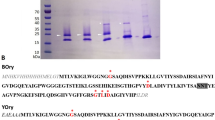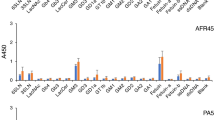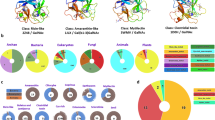Abstract
THERE is considerable evidence to suggest the involvement of cell surface carbohydrates in cell-cell recognition and adhesion in, for example, muscle cell fusion1 and the adherence of bacteria to cells2. It is not yet clear whether the selectivity of the recognition process is a consequence of the structure and sequence of the saccharide chain and/or the topographical distribution of the saccharide unit(s) in the membrane. Further insight into the relationship between cellular specificity and carbohydrate structure and distribution may be gained if it were possible to introduce saccharide molecules on to specific portions of the cell surface. We show here that bovine erythrocytes, which are not normally agglutinated by the plant lectin concanavalin A (con A) (refs 3, 4), can be rendered agglutinable by the chemical introduction on to the cell surface of α-D-mannose residues, which are thought to be the primary specificity determinant for this lectin. The lectin-induced agglutination of cells can be taken as a model for the investigation of the general problem of the role of sugars in cell–cell recognition.
This is a preview of subscription content, access via your institution
Access options
Subscribe to this journal
Receive 51 print issues and online access
$199.00 per year
only $3.90 per issue
Buy this article
- Purchase on Springer Link
- Instant access to full article PDF
Prices may be subject to local taxes which are calculated during checkout
Similar content being viewed by others
References
Gartner, T. K. & Podleski, T. R. Biochem. biophys. Res. Commun. 67, 972–978 (1975); 70, 1142–1149 (1976).
Ofek, I., Mirelman, D. & Sharon, N. Nature 265, 623–625 (1977).
Sumner, J. B. & Howell, S. F. J. Bact. 32, 227–237 (1936).
Weltzien, H. U. Expl Cell Res. 93, 111–121 (1975).
Matta, K. L. Girotra, R. N. & Barlow, J. J. Carbohyd. Res. 43, 101–109 (1975).
Blumenfeld, O. O., Gallop, P. M. & Liao, T. H. Biochem. biophys. Res. Commun. 48, 242–251 (1972).
Liao, T. H., Gallop, P. M. & Blumenfeld, O. O. J. biol. Chem. 248, 8247–8253 (1973).
Gahmberg, C. G. & Anderson, L. C. J. biol. Chem. 252, 5888–5894 (1977).
Findlay, J. B. C. J. biol. Chem. 249, 4398–4403 (1974).
Barrat, D. G. Sharom, F. J., Thede, A. E. & Grant, C. W. M. Biochim. biophys. Acta 465, 191–197 (1977).
Roses, A. D. J. supramolec. Struct. 4, 481–486 (1976).
Dodge, J. T., Mitchell, C. & Hanahan, D. J. Archs Biochem. Biophys. 110, 119–130 (1963).
Maddy, A. H. & Spooner, R. L. Vox Sang 18, 34–41(1970).
Margolis, J. & Kendrick, K. G. Analyt. Biochem. 25, 347–362 (1968).
Glossman, H. & Neville, D. M. J. biol. Chem. 246, 6339–6346 (1971).
Author information
Authors and Affiliations
Rights and permissions
About this article
Cite this article
ORR, G., RANDO, R. Synthetic concanavalin A receptors and erythrocyte agglutination. Nature 272, 722–725 (1978). https://doi.org/10.1038/272722a0
Received:
Accepted:
Issue Date:
DOI: https://doi.org/10.1038/272722a0
This article is cited by
-
Threshold effects on the lectin-mediated aggregation of liposomes: Influence of the diameter of the liposomes
The Journal of Membrane Biology (1982)
Comments
By submitting a comment you agree to abide by our Terms and Community Guidelines. If you find something abusive or that does not comply with our terms or guidelines please flag it as inappropriate.



